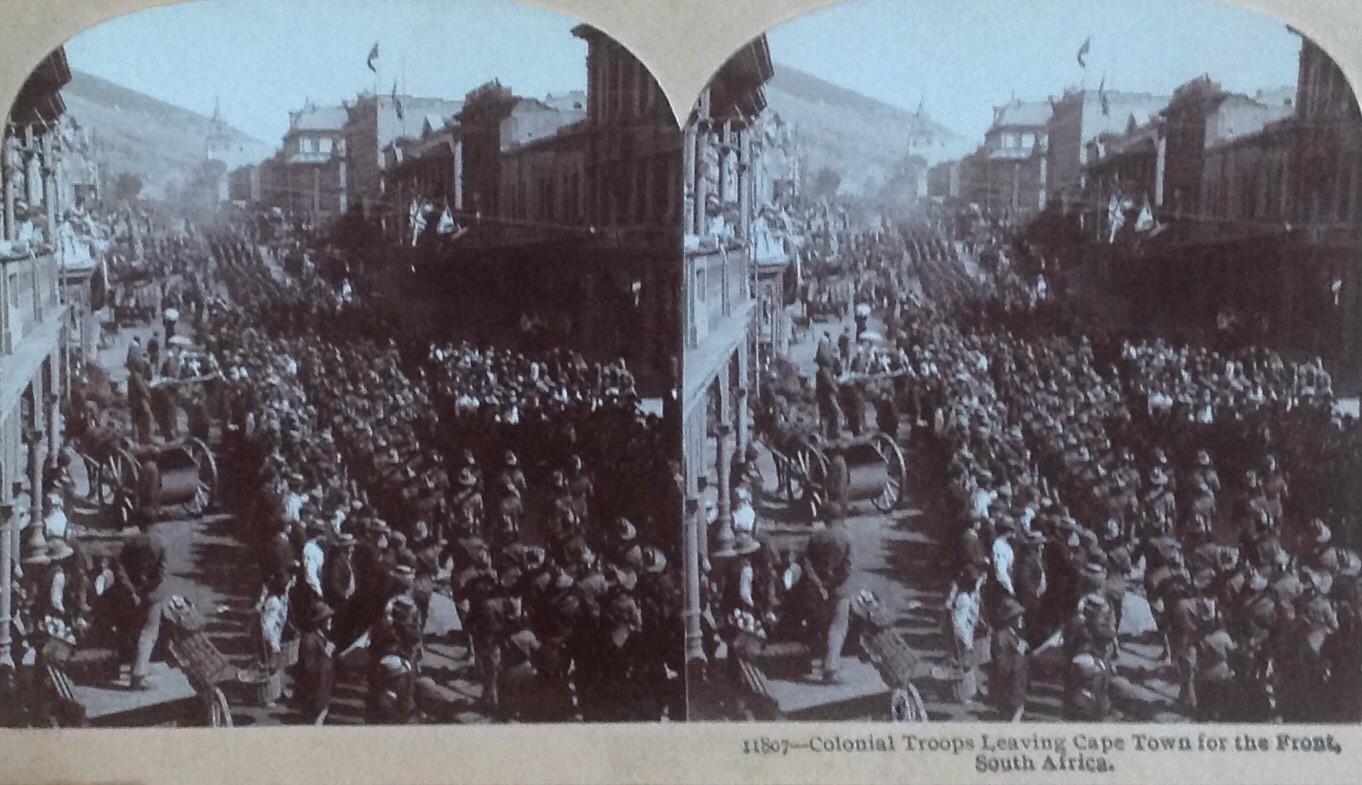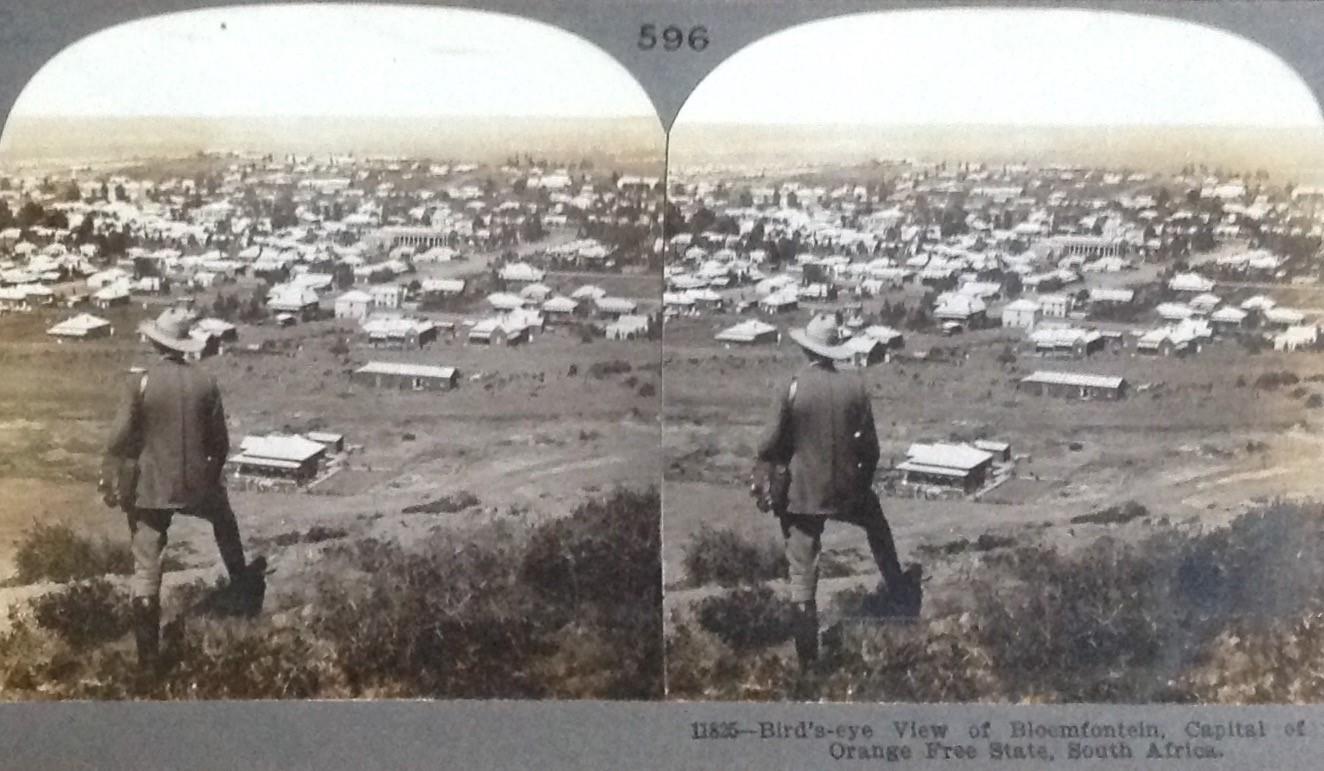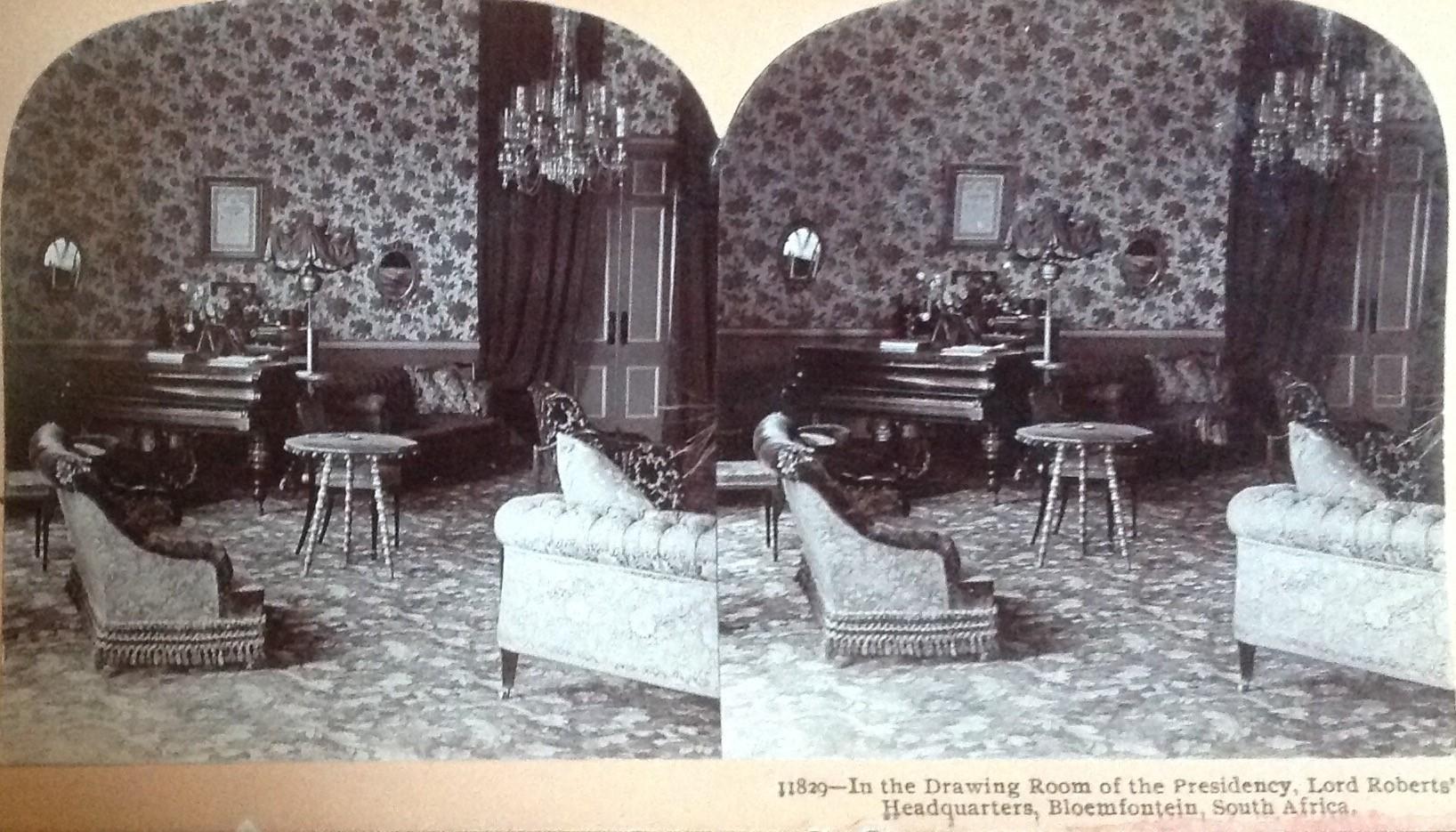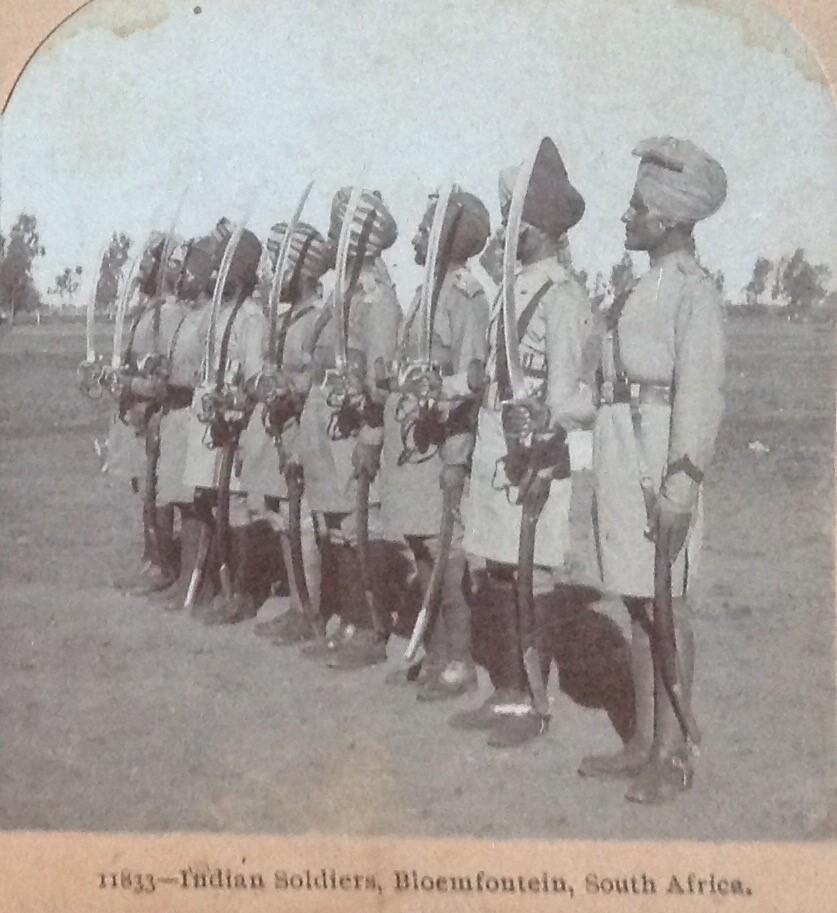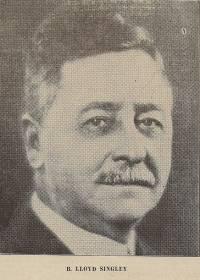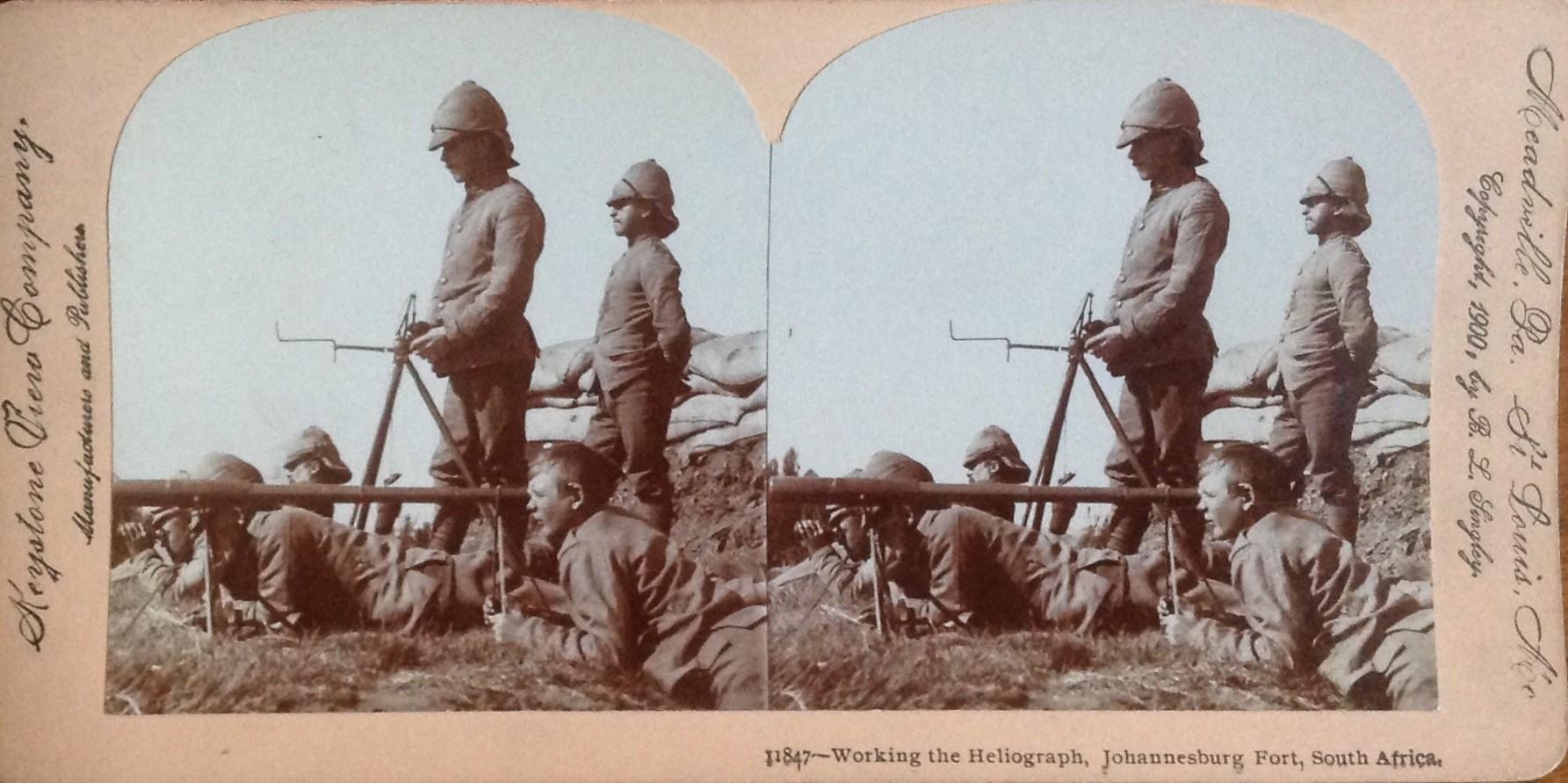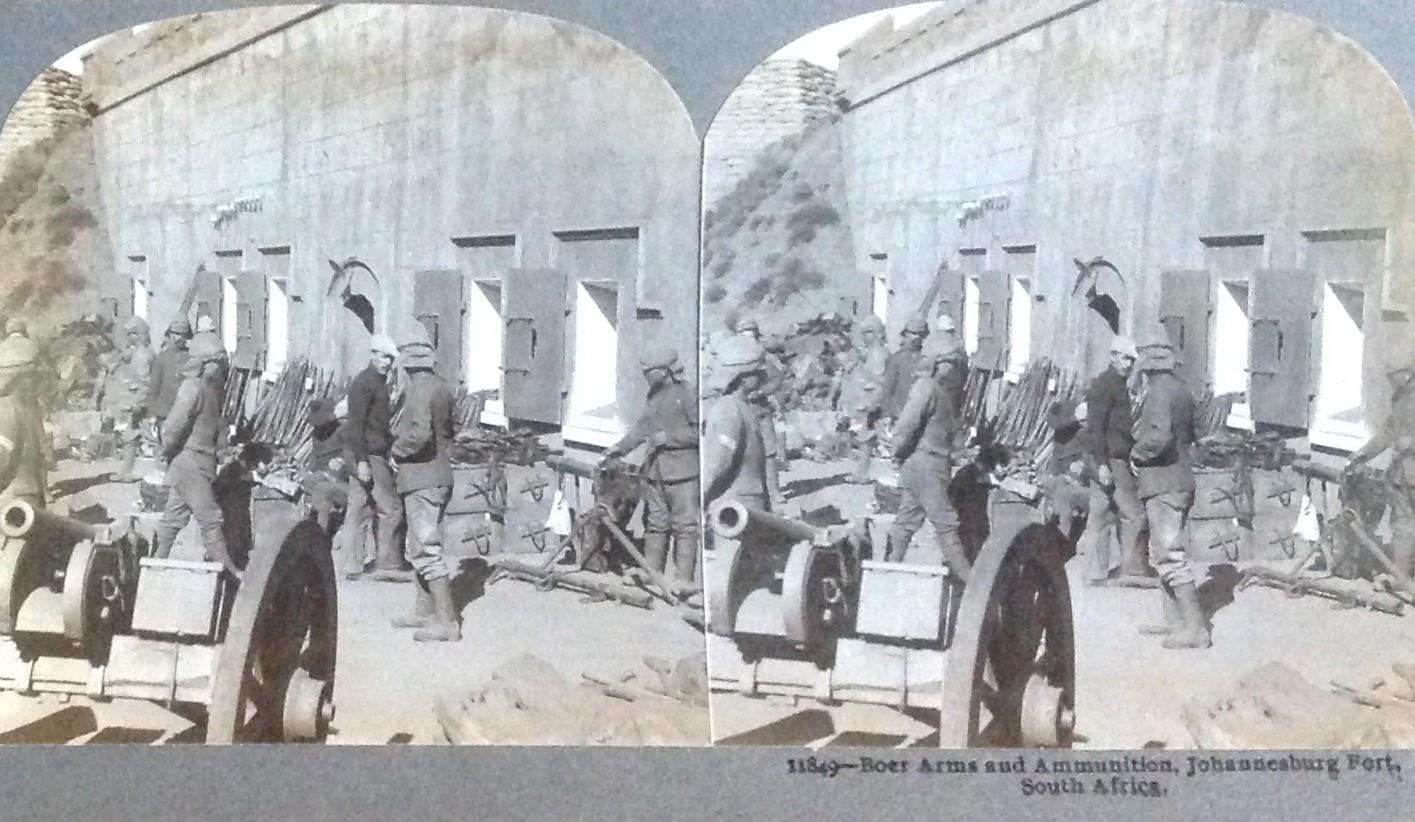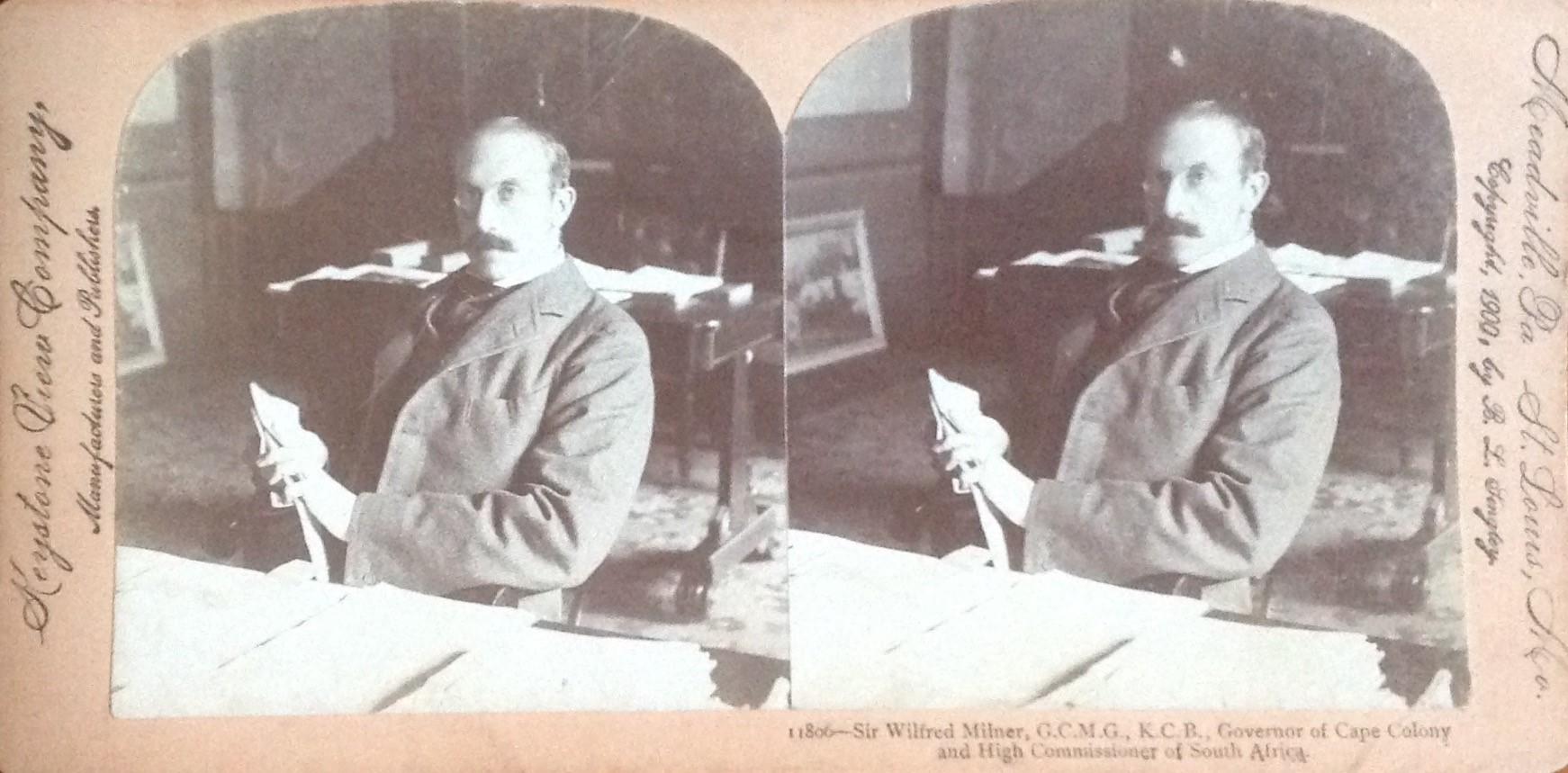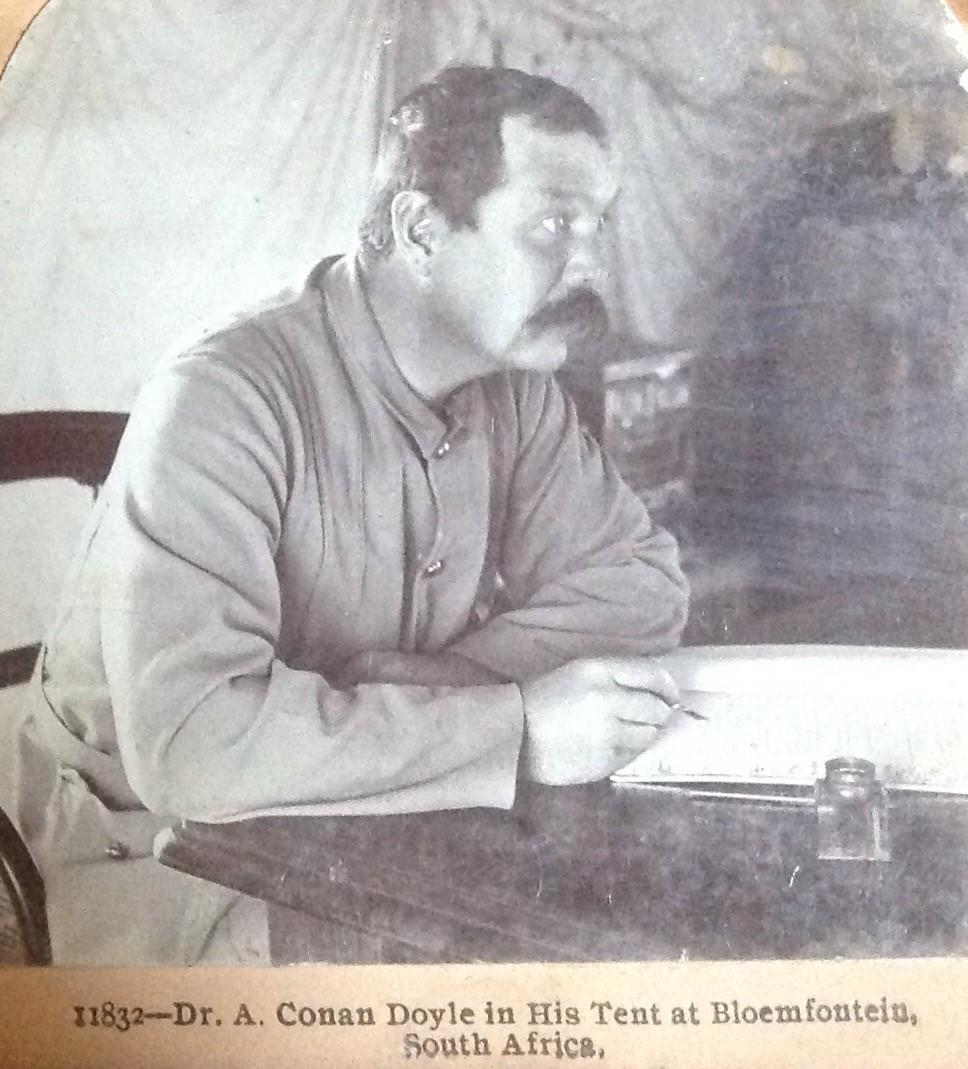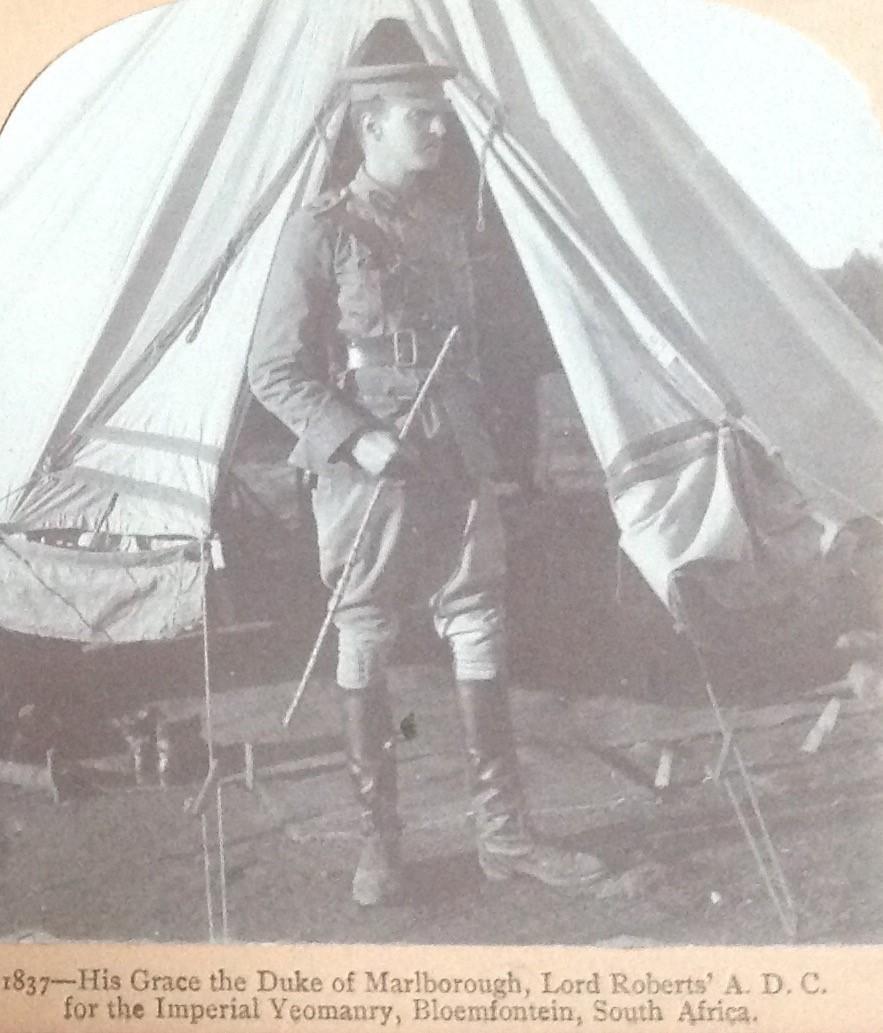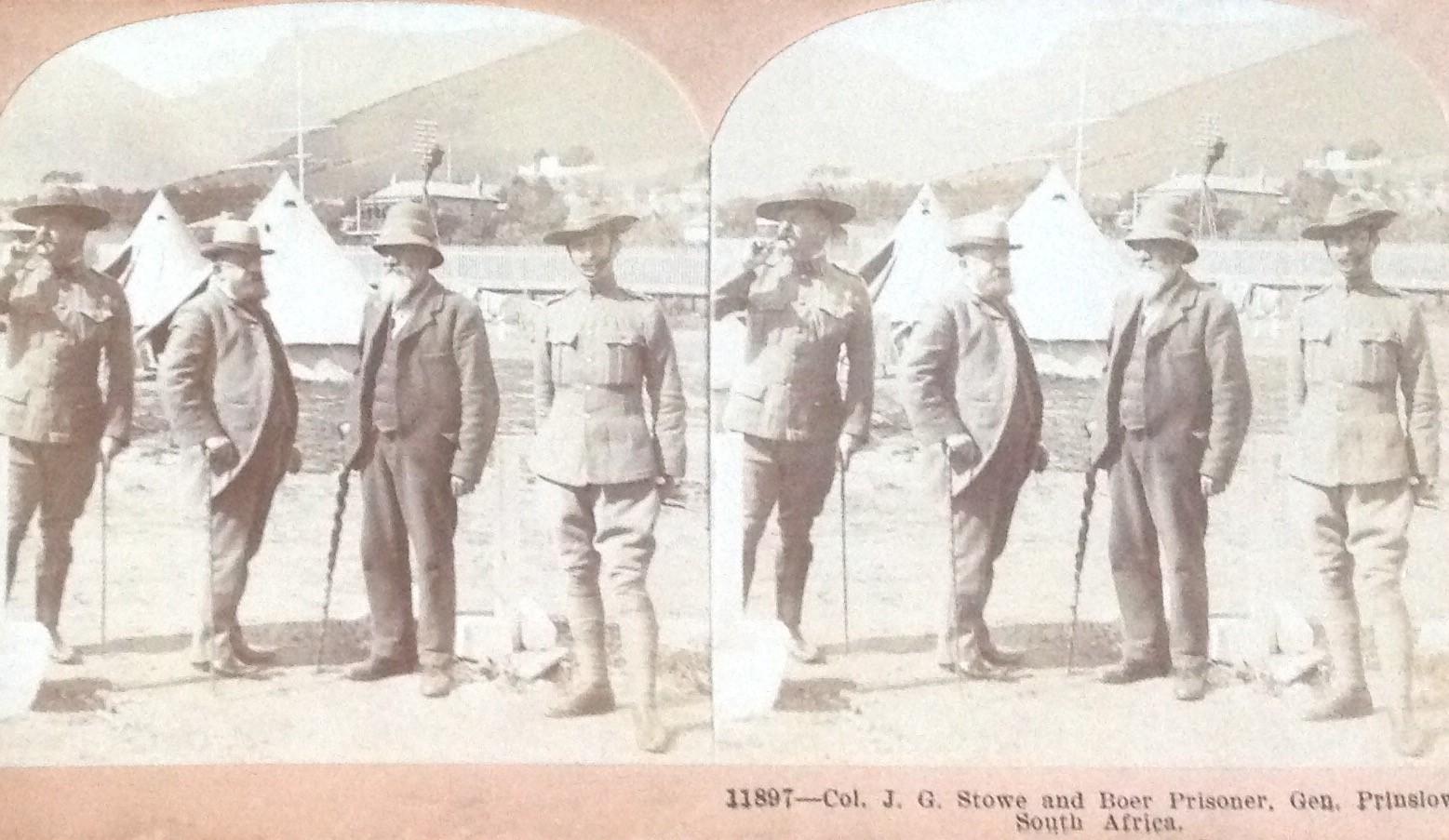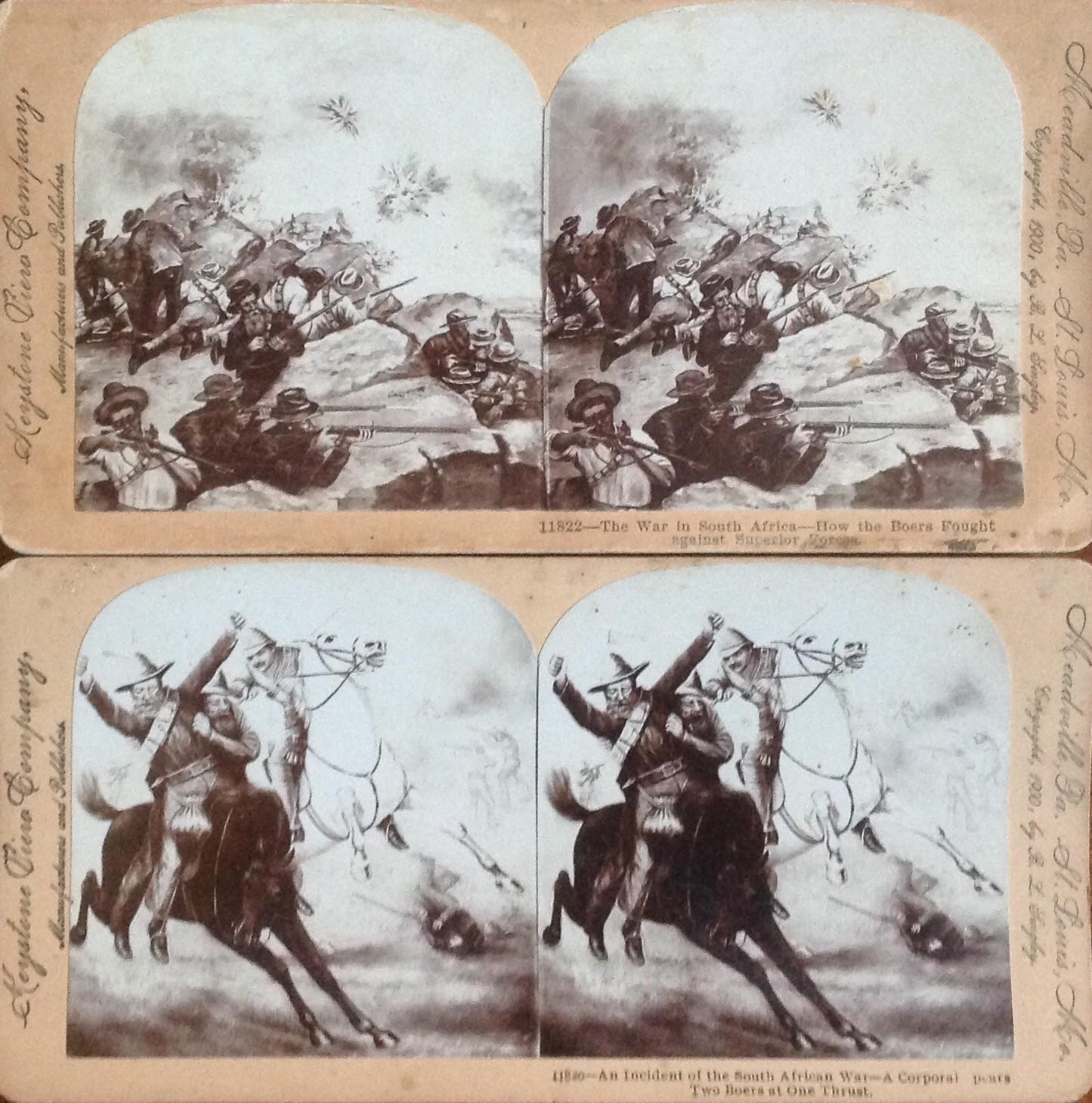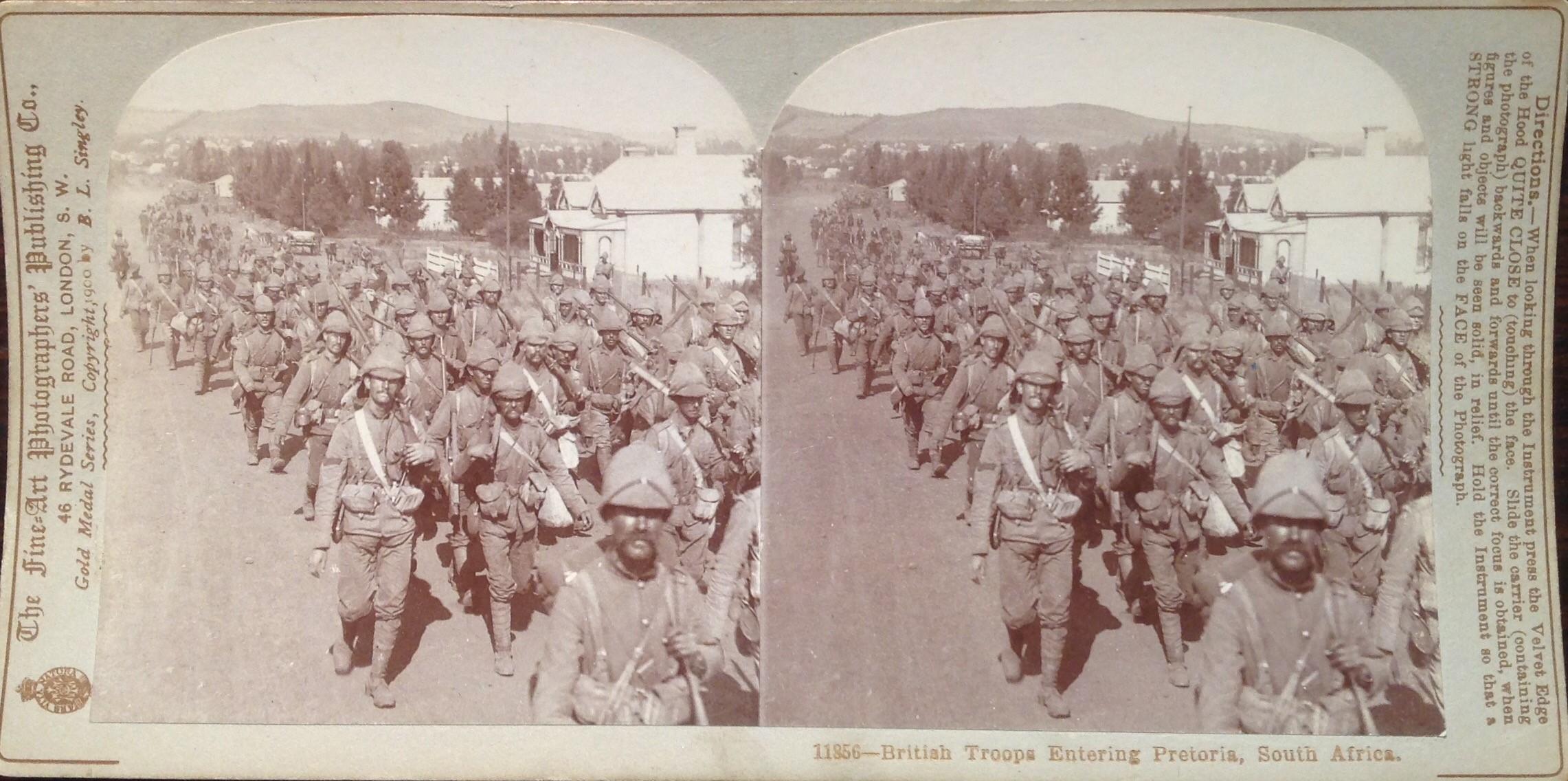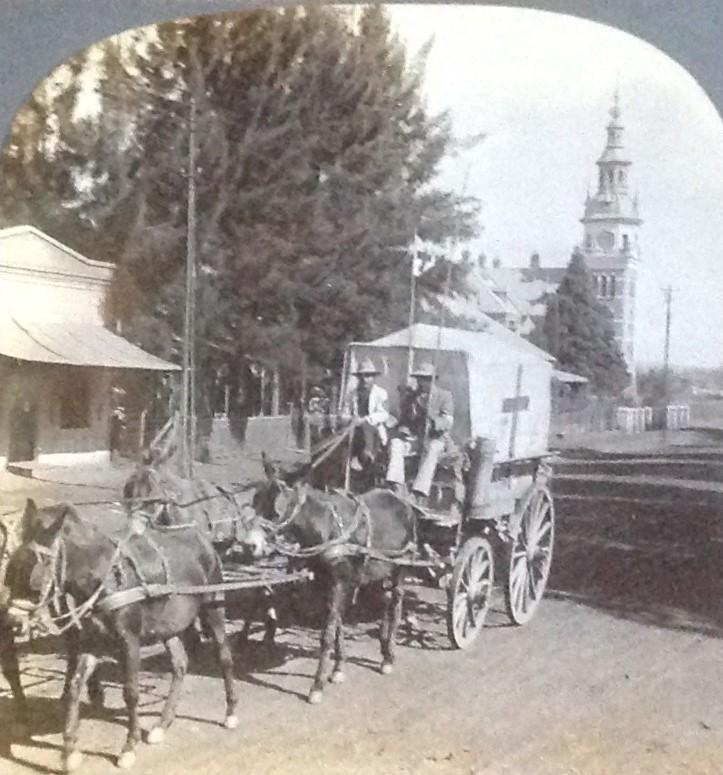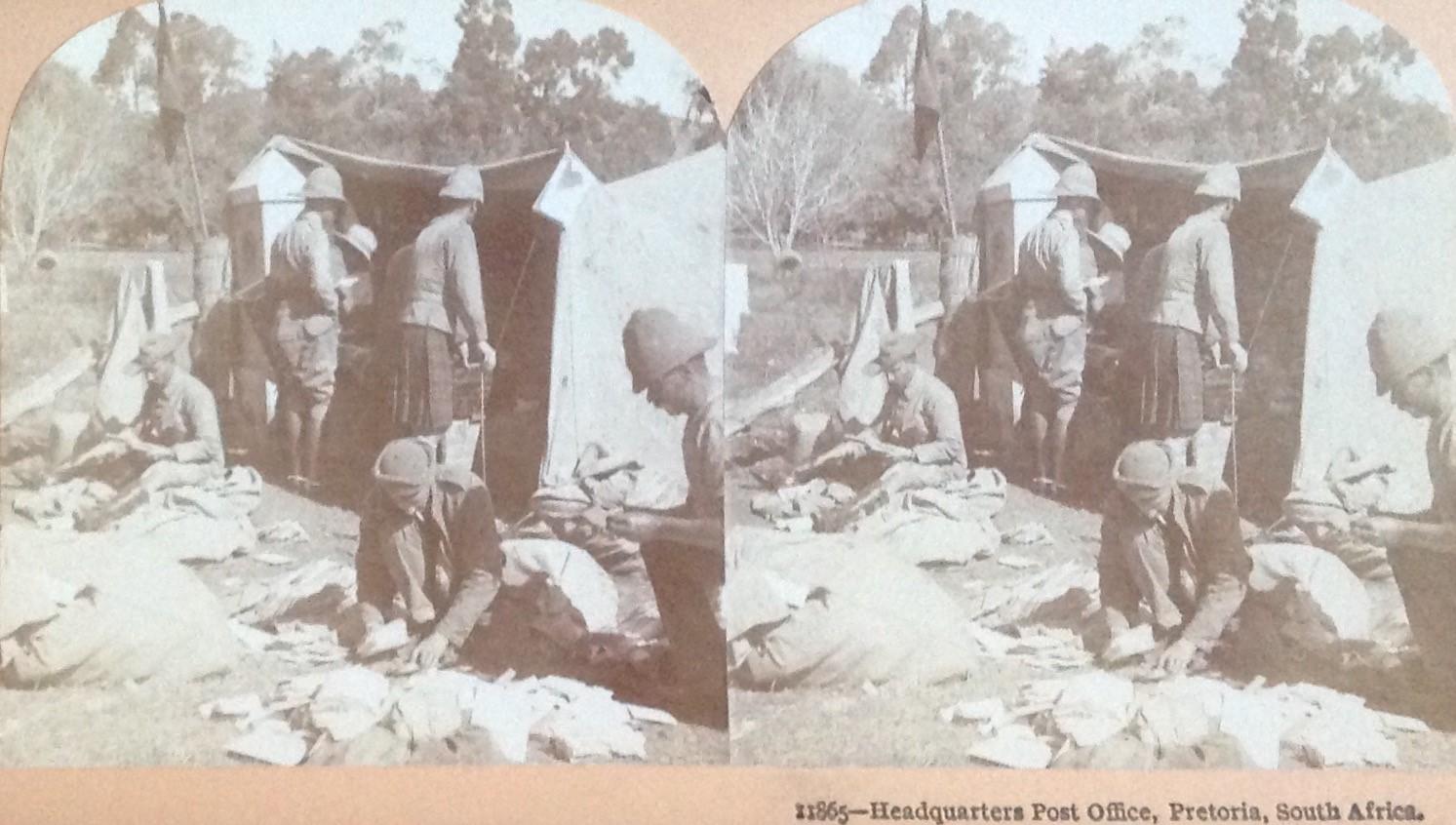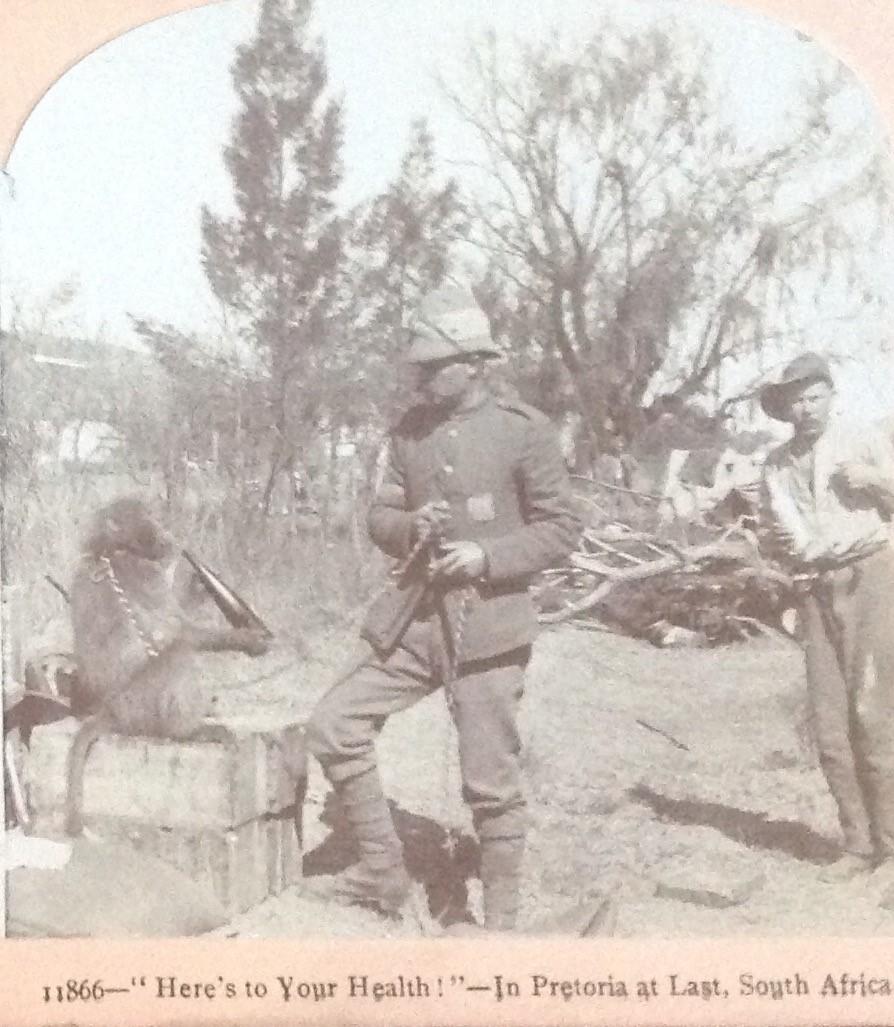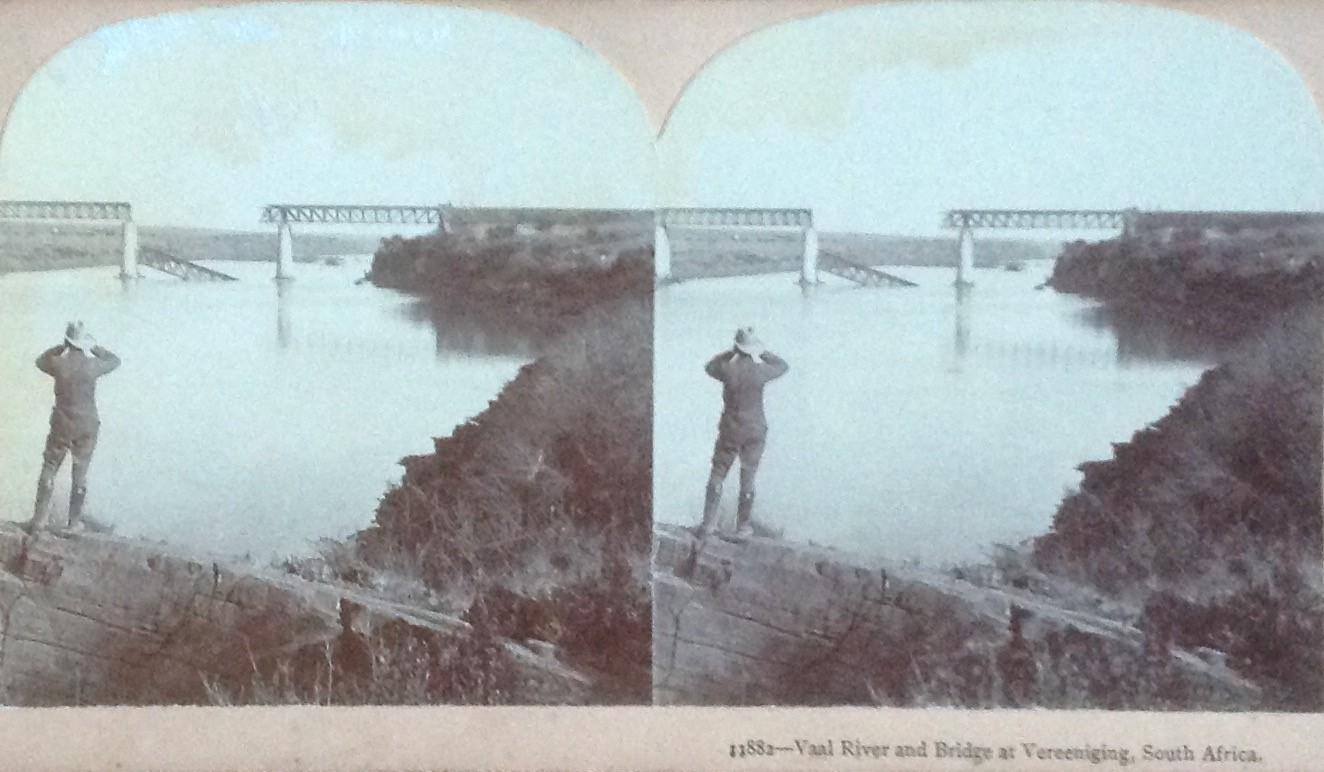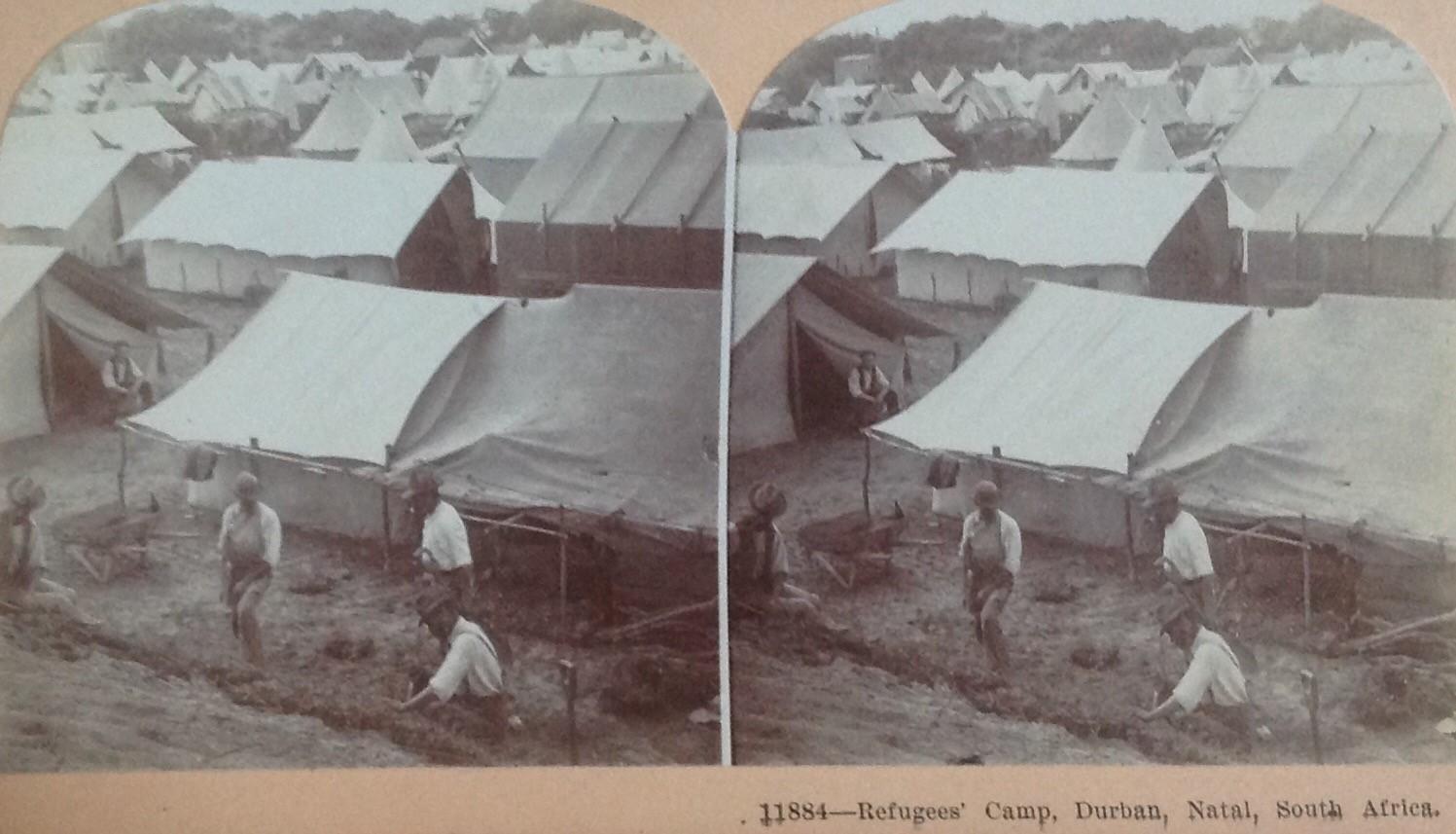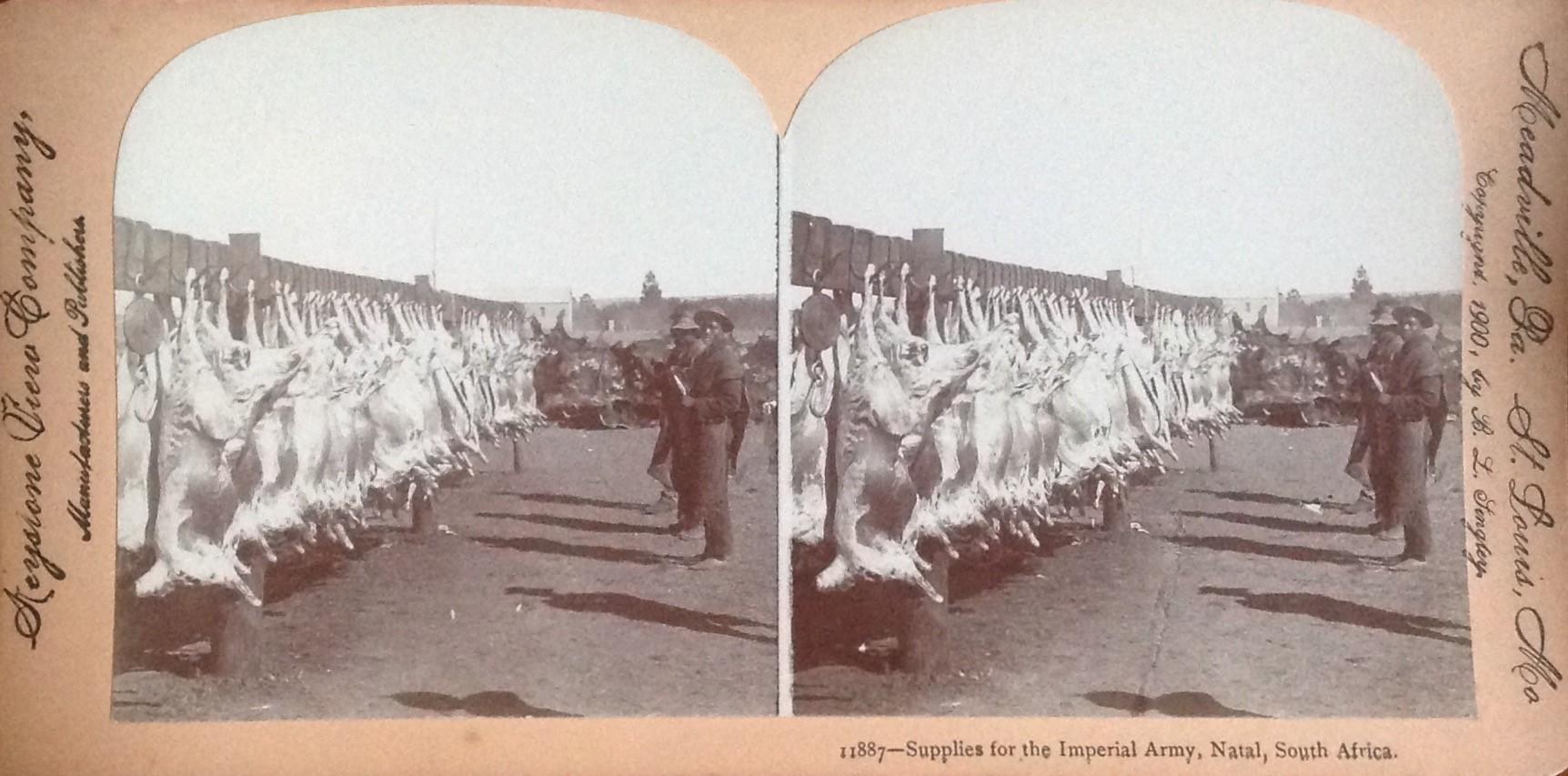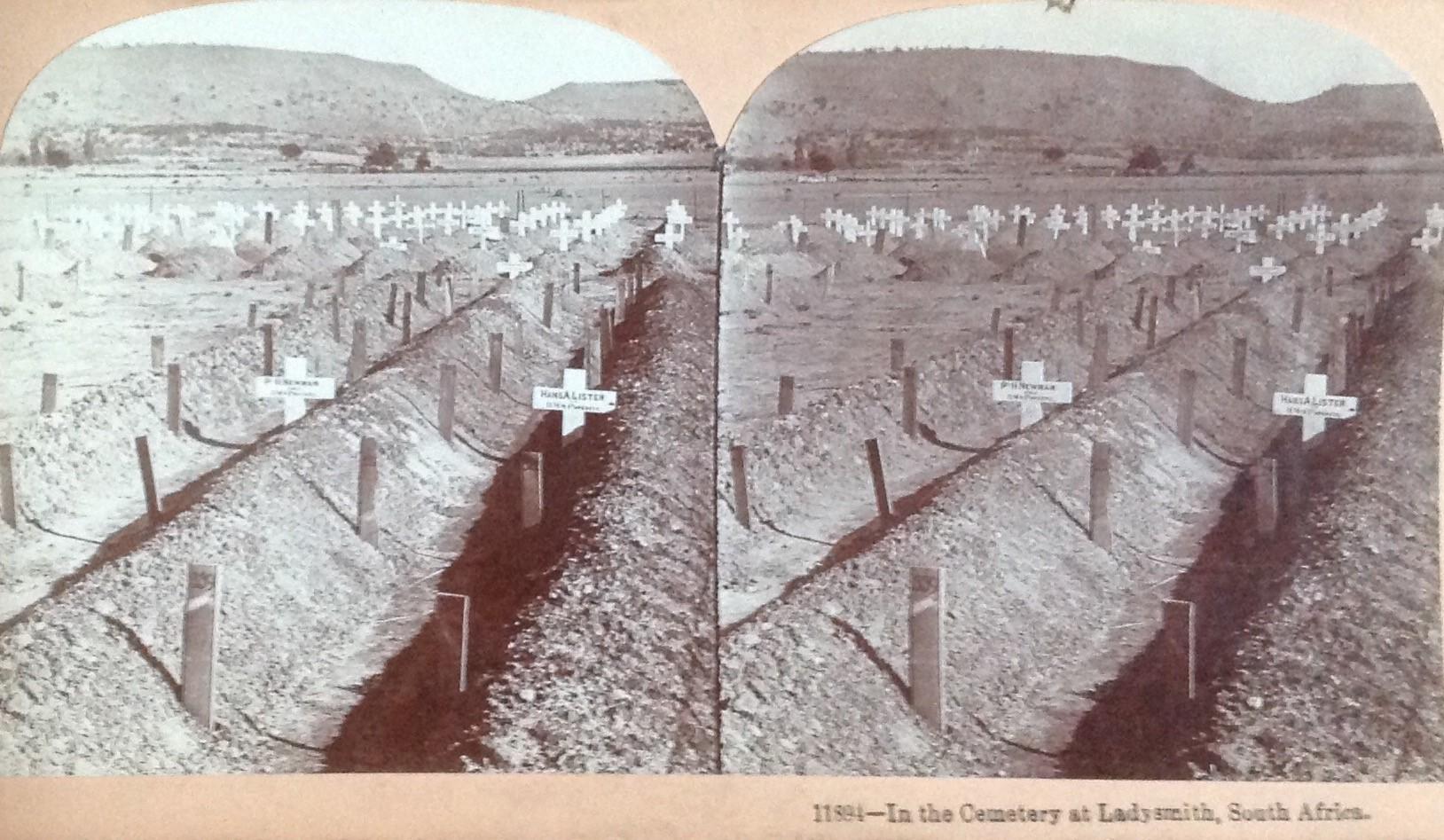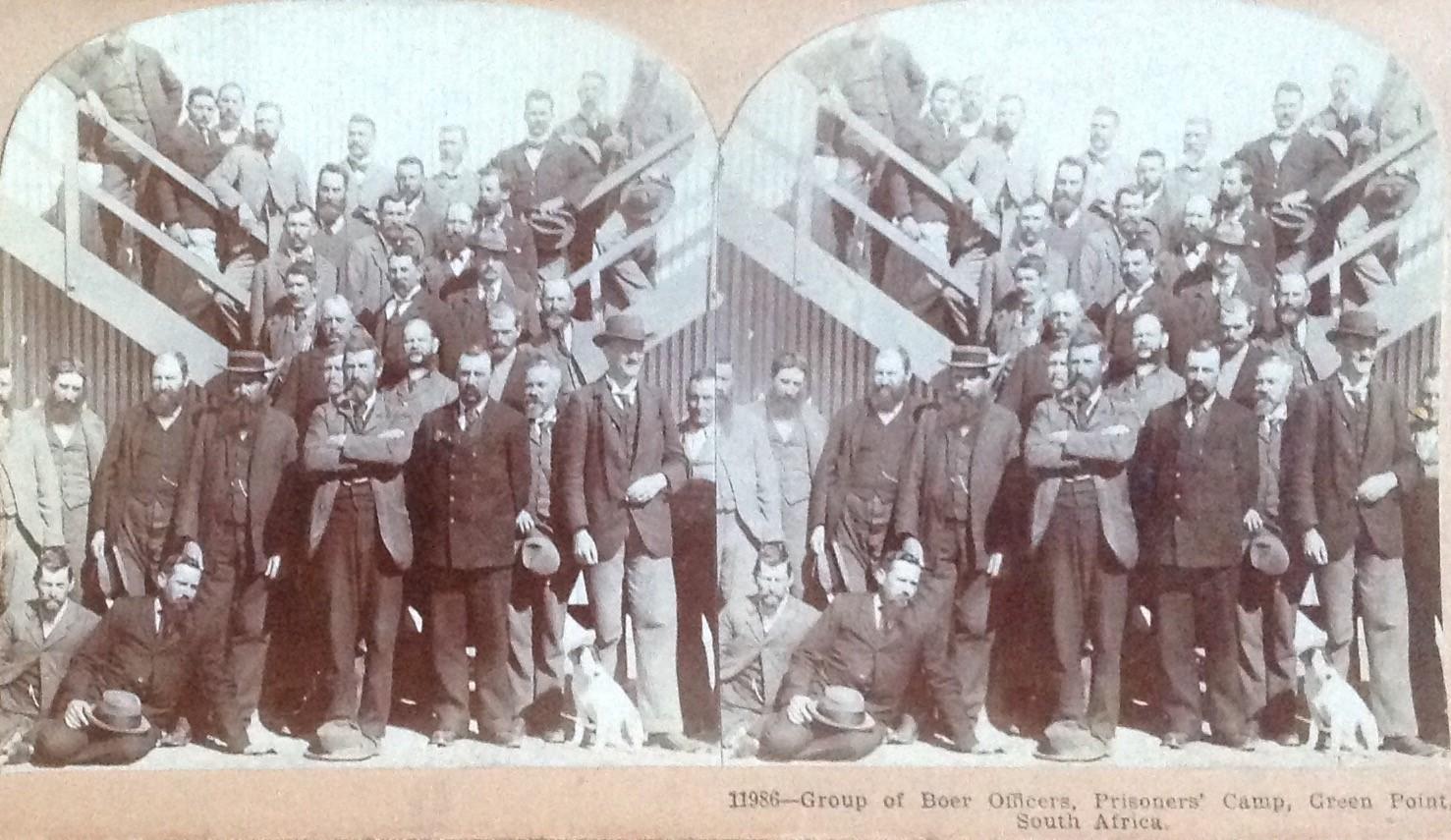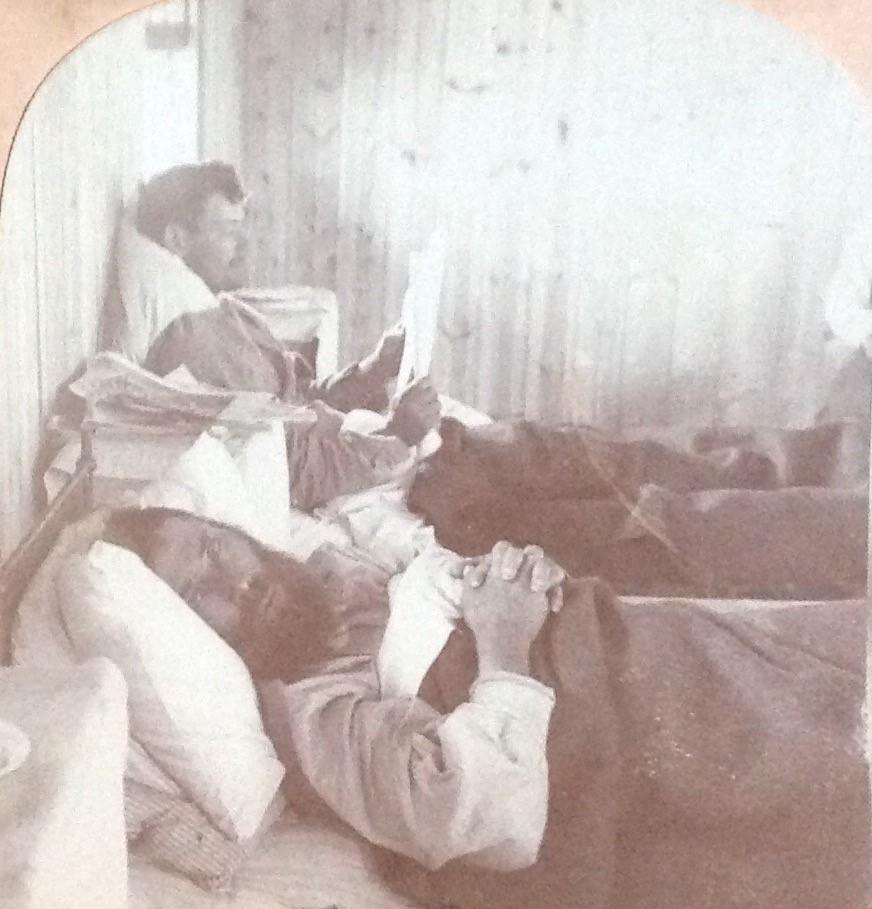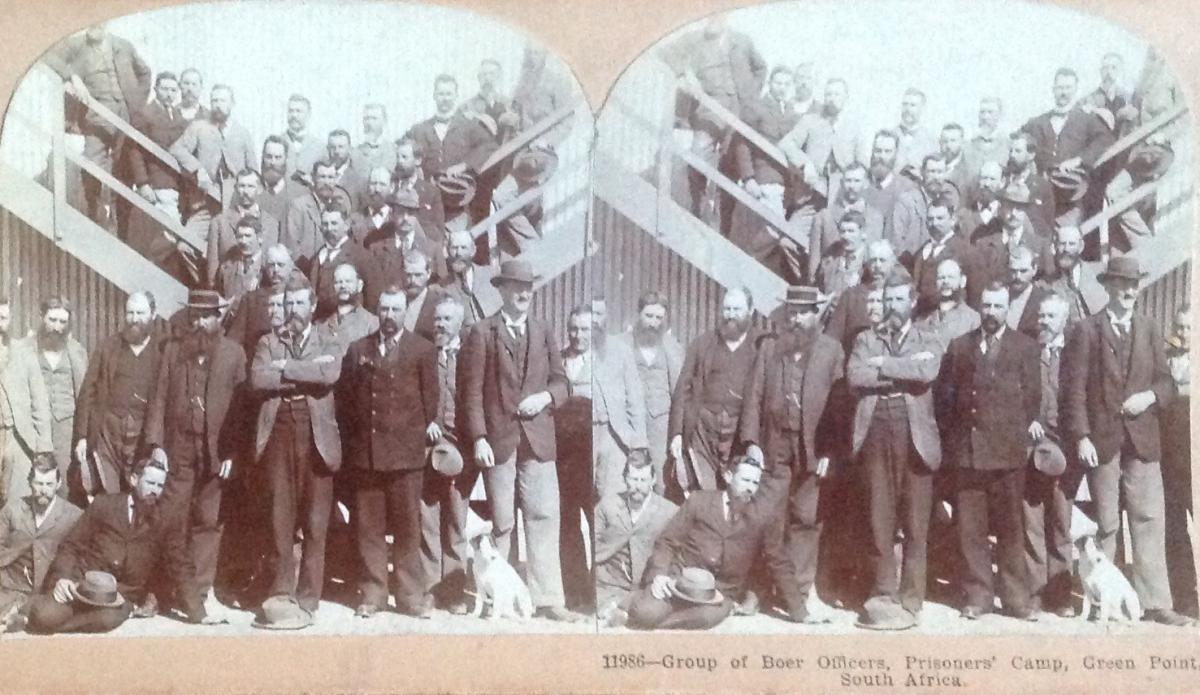
Disclaimer: Any views expressed by individuals and organisations are their own and do not in any way represent the views of The Heritage Portal. If you find any mistakes or historical inaccuracies, please contact the editor.
The primary purpose of this article is to introduce the first known catalogue of Anglo-Boer war stereo photographs produced by the American based Keystone View Company (Version 1 – as at April 2022 - click here to view).
At this early stage it also needs to be pointed out that Keystone View Company published their stereoviews in the United Kingdom under the name “The Fine-Art Photographers’ Publishing Co”. The numbering convention and titles applied for these Anglo-Boer war images were the same as for the views published under the Keystone brand. Whilst the Keystone View Company (Keystone) is the main theme of this article, the catalogue attached would be inclusive of the British published views.
This article is the third in a series on South African Anglo-Boer war stereo photographs, or stereoviews, produced by American based entities.
The first in the series was on the Anglo-Boer war stereo photographs produced by Underwood & Underwood (click here to view), whilst the second in the series was on the Kilburn company (click here to view). All three these entities, Keystone included, were stiff competition to each other – also during the Anglo-Boer war period.
Underwood & Underwood was established during 1881 and ceased their activities 39 years later (during 1920), whilst Kilburn was established during 1865. They discontinued their activities 44 years later (during 1909).
After having made some crucial adaptations in order to survive the industry, Keystone became the longest survivor of the three American entities. Keystone was established during 1892, with their final activity in producing stereoviews being early 1960s – therefore producing stereoviews for some 70 years!
Colonial troops leaving Cape Town for the front. The soldiers marching out of town attracted much attention from the local residents. Locals can be seen lining the street. Note the men on the left standing on carts in order to obtain a better view. Also note top left the people standing on the balcony.
Stereoviews are two images pasted side by side on a pre-printed cardboard. These images were the end result of images captured by stereo cameras fitted with two lenses side by side.
Similar to the more modern View Master, a two-image card (stereo card or stereoview) was then inserted into a stereoscope and through a set of double lenses the viewer would then see one fused image, complete with a riveting three-dimensional effect.
Stereoscopes attained their height of popularity as home entertainment devices in the Victorian era and were as popular in most living rooms as the piano.
A number of different photographic formats were used in producing stereoviews, including daguerreotypes, ambrotypes, wet plate glass positives, salt paper prints, albumen prints and gelatine prints.
A large number of sales of stereoviews were generated through the efforts of door-to-door salespeople where groups of college students would often canvas entire towns. The stereoview's combination of educational value and entertainment potential appealed to the emerging middle-class families.
Factors which bolstered stereography's popularity was the novelty of experiencing explicit three-dimensional detail contained on a stereoview with the potential for card owners to frequently revisit views of world events or a variety of other topics in private or during social gatherings.
Stereoviews were to nineteenth century generations what the internet, social media and cellular phones are to contemporary cultures today, enabling the then armchair observers to have vicarious experiences in faraway places.
It is fitting then, that a series on the Anglo-Boer War had to be published, allowing images of the war in far-away South Africa to be viewed in the comfort of American, European and Australasian living rooms.
When Underwood & Underwood (the larger publisher of the three) discontinued their stereoview production during 1920, they sold their stereographic stock and rights to the Keystone View Company resulting in Keystone becoming the major publisher of stereographs in the world post 1920.
Bird’s-eye view of Bloemfontein, capital of the Orange Free State. The back of the card contains a detailed description of Bloemfontein. It is described as “a sort of South African Denver” with a number of fine public buildings.
In the drawing room of the presidency, Lord Roberts’ headquarters, Bloemfontein
Indian soldiers, Bloemfontein. The men photographed here seem to be a group of Bengal Lancers. It is estimated that some 9000 soldiers from India were active during the Anglo-Boer war (supporting the British). These men mainly took on non-combative/supportive roles during the war. Some of these soldiers elected to stay behind in South Africa post the war. A monument commemorating members of the Indian army was erected on Observatory Ridge (Johannesburg).
Benneville Lloyd Singley - Mastermind behind the Keystone View Company
Benneville Lloyd Singley, son to Andrew Singley and Caroline Sherman, was born on 8 December 1864 in Union Township, Pennsylvania.
Singley arrived in Meadville in north-western Pennsylvania during 1886 to enrol at Allegheny College's preparatory department.
Three years later (1889) he married Anna Bell Caraway in Meadville, Pennsylvania. The couple had five children.
After James M. Davis, who distributed stereoviews for the Kilburn Brothers at the time, showed Singley a stereograph of two silver gray foxes in the woods Singley was hooked. Gazing at the three-dimensional image resulted in Singley visualising the educational potential of stereoscopic photography which enkindled in him a desire to teach others through the use of stereoviews.
Benneville Lloyd Singley – the mastermind behind the Keystone View Company. Singley’s business, established during 1892, derived its name from the nickname of the state he resided in, namely Pennsylvania - the “Keystone State”.
This very experience resulted in Singley photographing the damage caused by the flooding of the French Creek in Meadville during 1892. The Keystone View Company came about the same year when Singley developed multiple prints of the resultant 30 photographic negatives produced of the flood which he then pasted on cardboard mounts bearing the name of Keystone View Company.
Singley adopted the moniker of “Keystone View Company” from Pennsylvania’s nickname, namely the “Keystone State.”
Ironically, in the middle of this all, Singley also happened to have been a salesman at Underwood & Underwood – a company he later bought out.
Singley retired as the president of the Keystone View Company during 1936 and passed away not long thereafter on 15 November 1938, aged 73, 46 years after establishing the immensely successful Keystone View enterprise.
Working on the Heliograph, Johannesburg Fort. Two soldiers are seen using binoculars in order to intercept signals whilst the third (in the middle) is penning down any information received.
Boer arms and ammunition, Johannesburg Fort. Built during 1893 to house criminals produced by the rising mining town. The prison became Johannesburg’s first military fort after the Jameson Raid in 1896.
Anglo-Boer War Stereoviews
War correspondents and photographers from various American photographic establishments descended upon South Africa at the start of the Anglo-Boer war. Amongst them was a Keystone View Company appointed photographer.
The photographic styles and theme selection clearly differed between the three American publishing entities. The appointed Keystone photographer was more inclined to focus on personalities present during the war, such as Milner, Conan Doyle, Stowe, Prinsloo or the Duke of Marlborough – photographs of whom are included below.
Sir Wilfred (sic) Milner, G.C.M.G, K.C.B., Governor of Cape Colony and High Commissioner of South Africa. Alfred Milner (March 1854 – May 1925) was a British colonial administrator in South Africa between May 1897 and April 1905. The two abbreviations in the caption stand for: Grand Cross of the order of St. Michael and St. George (GCMG) and Knight Commander of Bath (KCB). Milner founded a series of schools in South Africa known as “Milner Schools”. These schools include amongst others Pretoria High School for Girls, Pretoria Boys High and Jeppe High School for Boys.
Dr. A. Conan Doyle in his tent at Bloemfontein. Arthur Conan Doyle (May 1859 – July 1930), aged around 41 on this photograph, was a field army surgeon during the Anglo-Boer War for a period of 6 months. He also created the Sherlock Holmes character. Sir Arthur Conan Doyle stated: “How great a privilege and how valuable a possession it is to be a medial man.”
His Grace the Duke of Marlborough, Lord Roberts’ A.D.C. for the Imperial Yeomanry, Bloemfontein. Charles Spencer-Churchill (1871 – 1934) was the 9th Duke of Marlborough. At the time the photograph was captured as Lord Roberts’ Aide-de-Camp (A.D.C) he had the rank of Lieutenant but was later promoted to Captain whilst still in South Africa. He was a first cousin to Winston Churchill.
Col J.G. Stowe and Boer prisoner, Gen. Prinslow (sic), General Marthinus Prinsloo (1838 – 1903), standing second from right, surrendered some 4000 men to the British near Fouriesburg on 30 July 1900. It has been recorded that some burghers felt that Prinsloo needed to be shot for this act.
Part of the Anglo-Boer war photographic range produced by Keystone also includes a number of mining photographs. Considering that gold mining in Johannesburg kicked off during 1887, with the Robinson mine being established during 1894, the mining theme was clearly woven into the Anglo-Boer war theme covered by the photographer.
Whilst it is not known at this stage who the visiting Keystone photographer was, it is unlikely that Singley himself ever put foot on South African soil to photograph the international newsworthy event, namely the Anglo-Boer war.
Unlike the numbering confusion in the broader Keystone ranges, the same does not entirely apply to images published by Keystone on the Anglo-Boer war.
In comparison with its competitors at the time (Underwood & Underwood and Kilburn), Keystone only published some 200 images during the Anglo-Boer war. The numbering of the stereoviews seems to range between 11800 and 12000 (click here to view). Ongoing research will need to confirm the exact numbering range as it relates to the Anglo-Boer War.
The numbering range between 11800 and 11899 contains the majority of Keystone stereoviews identified to date, with only 11 titles still to be confirmed.
In the numbering range 11900 to 12000, only 12 titles have been identified to date, of which only two can be directly related to the Anglo-Boer war, namely card numbers 11986 & 19988. The remaining 10 are either scenic, town or mining views as captured during the Anglo-Boer war period. At this point I do not have a rational explanation for this large gap.
To confuse the matter somewhat, at least two unnumbered stereoviews published by Keystone have been spotted on eBay.
As indicated earlier in this article, Keystone published their stereoviews in London under the name “The Fine-art Photographers’ Publishing Co” which was based at 46 Rydevale road, London. Why Singley elected to go this route is not clear. Could it be that the British population would have been more inclined to buy such imagery published under a British registered entity?
The numbering convention applied for the British published views of the Anglo-Boer war were the same as the standard Keystone views produced of the same photograph. In some instances, image description vary slightly from the American version.
The British version of the views has the following stipulated on the right front of each card:
Directions: - When looking through the Realisticscope, press the velvet edge of the hood quite close to (touching) the face. Slide the carrier (containing the photograph) backwards and forwards until the correct focus is obtained, when figures and objects will be seen solid, in relief. Hold the Realisticscope so that a strong light falls on the face of the photograph.
Views published on the Anglo-Boer war under “The Fine-Art Photographers’ Publishing Co.” name are less common compared to the standard Keystone cards.
Research conducted to date indicate that Underwood & Underwood published at least 525 images, whereas Kilburn published some 244 images of the Anglo-Boer war. Keystone therefore produced a lesser number of Anglo-Boer war images compared with their two competitors (Underwood & Underwood and Kilburn).
Not all the Anglo-Boer war images produced by Keystone were actual photographs. Keystone also made use of sketches (See card no 11820 & 11822 below). These images did not create the same three-dimensional effect as the actual photographs did in that the artistic images were exact reproductions. Stereo cameras are designed to take exactly the same photograph, each image slightly offset from the other which in turn creates the three-dimensional end result.
(Bottom) An incident of the South African war – A Corporal spears two Boers at one thrust. (Top): The war in South Africa – How the Boers fought against superior forces. The use of artist impressions in producing stereoviews is rather unusual in that the quality of the 3 dimensional images produced of these drawings are not the same as that of a photograph captured by a special camera. The artist probably used his own creativity in producing the image as captured in the bottom card. Did a British soldier really spear two Boer soldiers at once? It is not known how many of these artistic cards are included in the Keystone range on the Anglo-Boer War.
Whilst most of the Anglo-Boer war stereoviews produced by Keystone have a copyright date of either 1900 or 1901, some cards have been seen with a copyright date post 1910, which confirms that Keystone would have republished some views captured during the Anglo-Boer war period years down the line.
Original views of the Anglo-Boer war period seem to have been pasted on a brownish mounting cardboard, whereas cards that were produced in later years have been pasted onto a grey mounting cardboard.
The cards with copyright dates of 1900 or 1901 only seem to have Meadville and St. Louis captured as distribution points whereas other American and foreign cities were only added post these dates as distribution points.
Unlike Underwood & Underwood, Keystone did not produce boxed sets of Anglo-Boer war stereoviews.
Although not common, some hand-coloured views have also been spotted. It is not clear whether Keystone would have hand-coloured these or whether this was done post sales of the images.
British troops entering Pretoria. This card was published in Britain by B.L. Singley under the name “The Fine-Art Photographers’ Publishing Co”. The same image was also produced as a Keystone Company View image with the same number and same image description. These images are less common compared to the Keystone range.
A street view, Pretoria. An ambulance chart travelling down Church street west. In the background is President Kruger’s church (Dopper church) directly opposite his residence.
Headquarters Post Office, Pretoria. Classical example of a “field post office” out in the open. To remain in touch and up to date with loved once the receiving (and sending) of letters was a crucial component of the war – more so for the British soldiers who war far away from home.
Keystone View company images of South Africa post the Anglo-Boer war
Whilst the primary purpose of this article is to reflect on Keystone’s work during the Anglo-Boer war period, it can also be confirmed that they published multiple other images of South Africa.
These images were produced post the war and include images in the numbering ranges 17000+; 20000+ and 33000+.
It would require a separate research project to determine the number of images and titles produced in each of these ranges, but as one collector/researcher announced out of frustration: “Wish anyone trying to organise Keystone View Company stereoviews luck!”
Keystone View Company History – A Chronological Synopsis
Between 1892 through to 1960s Keystone produced and distributed both educational and comical, sentimental stereoviews as well as stereoscopes.
Below is a high-level, chronological summary of the Keystone company’s activities during this period.
- The trade list at the end of 1892 consisted of some 100 stereoview titles
- Three years later (1895) Keystone had issued approximately 700 different views
- Prior to 1897, Singley produced the prints from negatives himself, resulting in the quality of the prints generally being poor. Later prints however vastly improved with the help of his much-expanded company, a highly skilled team and better equipment and methods
- During 1898 Keystone began making and selling stereoscopes whilst also selling views and glass lantern slides to schools throughout the country. They also produced lantern slide projection equipment
- Between 1898 and 1906 there was an increased popularity in stereographs, resulting in Keystone (like Underwood & Underwood) entering the box-set market
- The company expanded rapidly and by 1905 it was the largest business of its kind in the world. All of the manufacturing was done in Meadville, but Keystone later also had branch offices in New York, St. Louis, San Francisco, Portland, Chicago, Toronto (Canada), London (England) and Sydney (Australia). Salesmen and photographers were scattered around the world, resulting in the company having had some 20 000 different views on offer at the time
- Between 1915 and 1921 Keystone purchased the negatives of nearly all of its competitors, including their two fierce competitors Underwood & Underwood and Kilburn. They also continued with having staff photographers travelling the world
- Although the company hired its own professional photographers, they also purchased rights to other negatives including several series of Underwood and Underwood negatives
- During 1918, Keystone became one of the only publishers permitted to photograph World War I battlefields and military operations. The photographer of the World War I series was Andrew S. Iddings. In publishing the World War I stereoscopic photographs, Keystone produced set collections made up of either 75, 100, 200 or 300 images
- During 1932 Keystone's stereo ophthalmic department was formed to meet the needs of eye specialists, safety and efficiency engineers and psychologists who needed stereoscopic tests. Keystone stereoscopic vision tests were used to test automobile and truck drivers, as well as airplane pilots. For those diagnosed with certain vision problems special Keystone stereoscopes and stereoviews were used in the home for daily eye-training exercises
- After Singley's retirement during 1936, two long-time Keystone employees, Charles E. Crandall and George E. Hamilton, purchased all of the Keystone stock. For the next 20 years Crandall and Hamilton ran Keystone
- By 1940 Keystone had commercially produced more than 40 000 stereoview titles
- During 1939, competition from the motion picture and the radio industries led Keystone to cease regular production; however, the company continued to fill individual orders and manufacture stereoscopes for optometric purposes until the late 1960s
- Keystone had a stereo photographer on staff until at least 1955
- On 19 November 1956 the Keystone president Charles E. Crandall died in his office whereafter George E. Hamilton became the sole shareholder, as well as the president of Keystone. Hamilton died during May 1962 following which Keystone was purchased by Mast Development Company of Davenport, Iowa during 1963
- By 1963 the department that sold stereoviews commercially as well as the educational department were closed down, yet Keystone continued to manufacture eye-training stereographic products as a subsidiary of Mast Development Company
- Orders for Keystone stereo sets continued to be filled by the company until late 1960s
- As a subsidiary of Mast Development Company, Keystone also produced tele binoculars and overhead projectors
- During 1972 Gifford Mast closed down the Meadville manufacturing site, although the name of Keystone View Company continues to be used on eye training equipment
- Finally - During 1978, the company's records and inventory of negatives, weighing more than 30 tons, were donated to the UCR/California Museum of Photography at the University of California Riverside, where the collection today is known as the Keystone-Mast collection.
A museum still exists in Pennsylvania which features the photography of the Keystone View Company. The Johnson-Shaw Stereoscopic Museum was founded by descendants of ex-employees of the Keystone View Company.
Here’s to Your Health! – In Pretoria at last. This photograph poses many questions. How tame is the baboon? When and where was the animal captured? At least one instance is recorded where a soldier took his “souvenir” pet baboon back home on his return from war. Back in Ireland the baboon was donated to an Irish zoo where it died 2 years later.
Vaal river and bridge at Vereeniging. This bridge was blown up by retreating Boers during May 1900 to hinder advances of the British forces.
Refugees’ camp, Durban. This image was captured in one of the three Durban based concentration camps at the time, namely Merebank, Wentworth or Jacobs Siding.
Supplies for the Imperial army, Natal
Numbering of the Stereoviews
Prior to 1898, in terms of Keystone’s broader range of stereoviews, the numbering of their images was not chronological in that some numbers were never used whilst others were duplicated many times. Although not applicable to the Anglo-Boer war era, the numbering seems to reflect the date of issue or when the actual image was captured. To add to confusion, between 1892 and 1896 alone, Singley used at least ten different types of mounts.
On some views a number will appear in the upper centre of the stereograph. This is a “set” number. It is the position of that view in a particular boxed set.
Where Keystone bought out the negatives of other stereoview manufacturers and used them to produce views in their own range, they would denote them for example with a prefix of a “U” for Underwood & Underwood images or “W” for H.C. White images.
Keystone's "Tour of the World" set of stereo images with a numbering convention ending with “T”, includes a broad spectrum of international scenes.
About the Catalogue
- The catalogue (click here) only captures numbering of views as it relates to the Anglo-Boer war period;
- The catalogue is inclusive of the images published in Britain under the name of “The Fine-Art Photographers’ Publishing Co.”;
- The catalogue contains two unnumbered views (n/n). There could be many more of these views that still need to be identified;
- The suggested numbering range as it relates to the Anglo-Boer war era is between cards numbers 11800 and 12000;
- Under the first 100 numbers, 11 titles still need to be identified, whilst under the last 100 numbers 78 still need to be identified (as at April 2022);
- Any views relating to South Africa, post the Anglo-Boer war with numbering ranges 17000, 20000 or 33000 have been excluded from this catalogue;
- Any views relating to South Africa with any other prefixes have also been excluded;
- The column of the far right (HPRC) indicates whether the cards are contained in the Hardijzer Photographic Research Collection or not.
In order to expand or improve the attached catalogue, readers interested in this topic are invited to engage me accordingly on carol.hardijzer@webmail.co.za
In the cemetery at Ladysmith. The names visible on the two white crosses in the forefront are those of British soldiers: P.H. Newman and Hans A Lister.
Group of Boer Officers, Prisoners’ Camp, Green Point
Comfort and rest for the sick and wounded – Boers in the prisoner’s hospital, Simons Town
One final article will reflect on smaller publishers that produced stereoviews during the Anglo-Boer war.
About the author: Carol is passionate about South African Photographica – anything and everything to do with the history of photography. He not only collects anything relating to photography, but also extensively conducts research in this field. He has published a variety of articles on this topic and assisted a publisher and fellow researchers in the field. Of particular interest to Carol are historical South African photographs. He is conducting research on South African based photographers from before 1910. Carol has one of the largest private photographic collections in South Africa.
Sources
- Gleason, L. (2018). Canvassed and delivered – direct selling at Keystone View Company (1898 – 1910) (dora.dmu.ac.uk)
- Hardijzer Photographic Research Collection (all photographs included in this article originate from the HPRC).
- Websites (Keystone View Company)
- Arthurconandoyale.co.uk/phusician
- stereoscopy.blog/2021/01/03
- snaccooperative.org/ark
- txarchives.org/utcah
- archives.lib.byu.edu
- winstonchurchill.org/publications
- findagrave.benneville-lloyd-singley
- Wikipedia.org/wiki
- Scua.library.umass.edu (World War Through the Stereoscope Collection)
- Whitehead, A. (2020). How India helped Britain win its ‘dirty war’. Thewire.in/history/India-Britain-Boer-War
Comments will load below. If for any reason none appear click here for some troubleshooting tips. If you would like to post a comment and need instructions click here.

